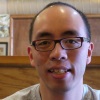- This is what life would actually be like without processed food
If you’re pedantic about not having any processed food, then this is what you’re going to get:The second and considerably more problematic consequence is that even the earliest form of food processing has probably contributed to obesity. When you process food, whether by cooking it or simply cutting it into smaller pieces, you tend to get more energy out of it relative to the energy expended processing and digesting it. So we now get more calories from the same amount of food than we used to, even though it’s no more satiating. Surely, Lieberman said, that helps explain why we’re eating so many more calories than we used to.
- Handcuffed to Uber
Here is a side you typically don’t hear about – early employees of Uber can’t leave the company because they can’t pay the tax on their options!In a completely hypothetical example, let’s say an early, top Uber engineer was given .5 percent of the company. Now let’s say this person was awarded options in 2011, when Uber raised $11 million in Series A funding at a reported $60 million valuation. His ownership stake at the time would have been $300,000. Yet today, that same stake (undiluted) would now be worth $300 million at Uber’s reported current post-money valuation of $60 billion. That’s a paper gain of $299,700,000.
- A Bird’s-Eye View of Nature’s Hidden Order
Fascinating introduction to the idea of hyperuniformity and how it appears in Nature. This is something you inherently know about, but haven’t ever formalized.Torquato and a colleague launched the study of hyperuniformity 13 years ago, describing it theoretically and identifying a simple yet surprising example: “You take marbles, you put them in a container, you shake them up until they jam,” Torquato said in his Princeton office this spring. “That system is hyperuniform.”
The marbles fall into an arrangement, technically called the “maximally random jammed packing,” in which they fill 64 percent of space. (The rest is empty air.) This is less than in the densest possible arrangement of spheres — the lattice packing used to stack oranges in a crate, which fills 74 percent of space. But lattice packings aren’t always possible to achieve. You can’t easily shake a boxful of marbles into a crystalline arrangement.
- After three weeks in China, it’s clear Beijing is Silicon Valley’s only true competitor
I’m curious about how tech is run in China given the everything-goes business mindset and standard sweatshop conditions. Those sound like bad points for the industry, but I think that it actually means that they can compete better than western companies.In China, there is a company work culture at startups that’s called 9/9/6. It means that regular work hours for most employees are from 9 am to 9 pm, six days a week. If you thought Silicon Valley has intense work hours, think again.
For founders and top executives, it’s often 9/11/6.5. That’s probably not very efficient and useful (who’s good as a leader when they’re always tired and don’t know their kids?) but totally common.
- What Are the Odds We Are Living in a Computer Simulation?
This is a very fascinating article about the idea that we really are in “The Matrix”. It’s fascinating because I’ve thought the idea to be really interesting ever since watching Men In Black when they zoomed out at the end and it turns out that our galaxy was just a marble in a box of some bigger being.Bostrom, in his original paper, envisioned a different possibility: if the computational cost of all these nested simulations is too high, he wrote, our simulators might simply click “quit.” The invention of simulation might be the end of the world.
 Hi! and welcome to the eclectic personal blog of Kevin Quan. Come in, stay awhile, peek into the nooks & crannies, and learn a bit about me and my interests.
Hi! and welcome to the eclectic personal blog of Kevin Quan. Come in, stay awhile, peek into the nooks & crannies, and learn a bit about me and my interests.